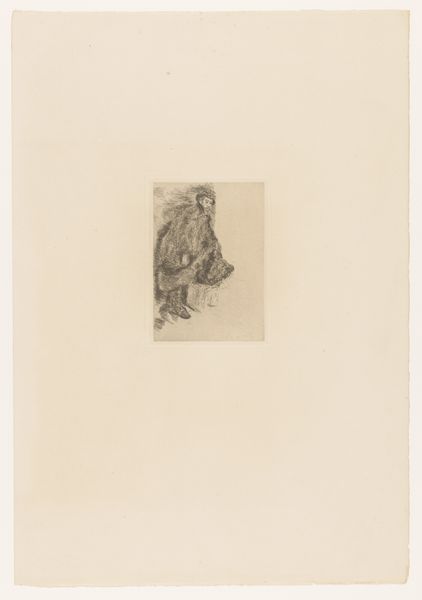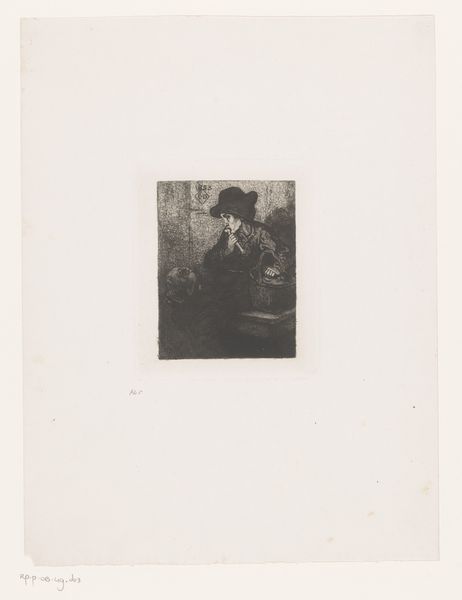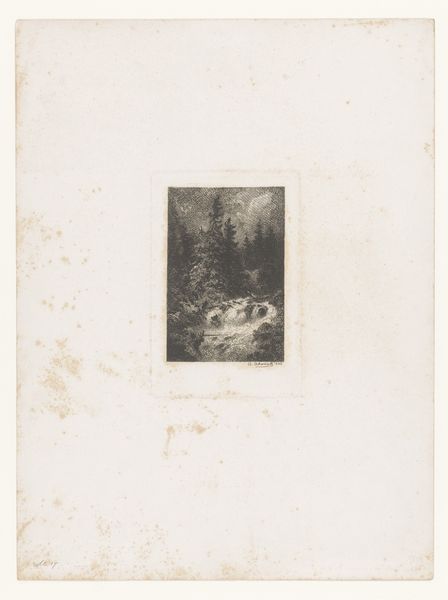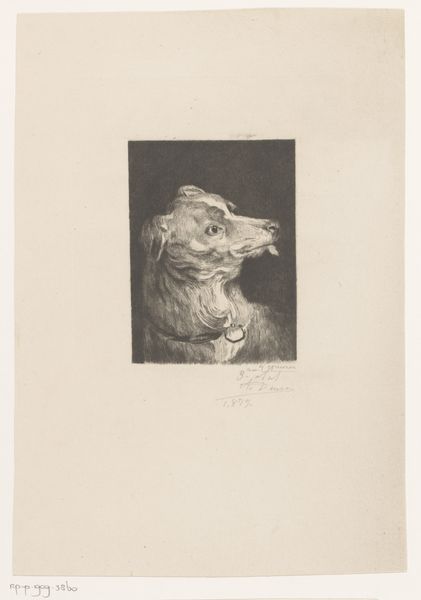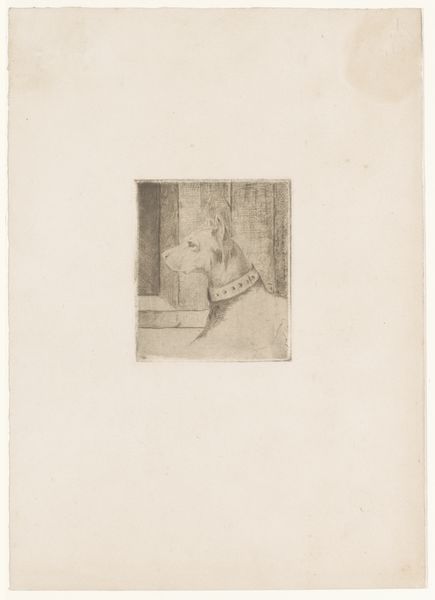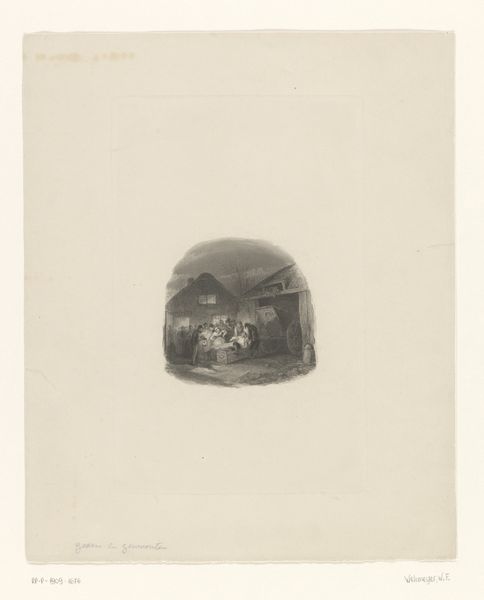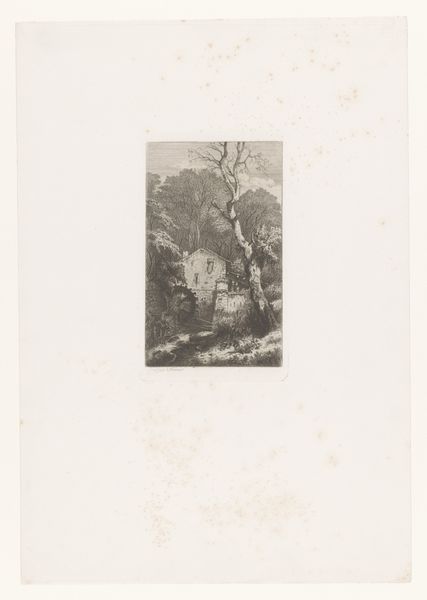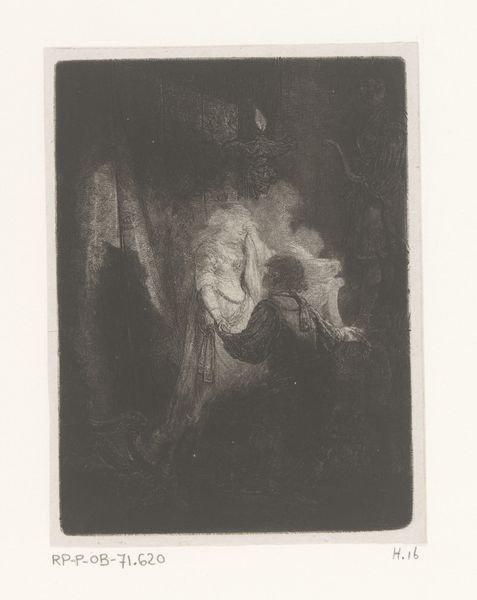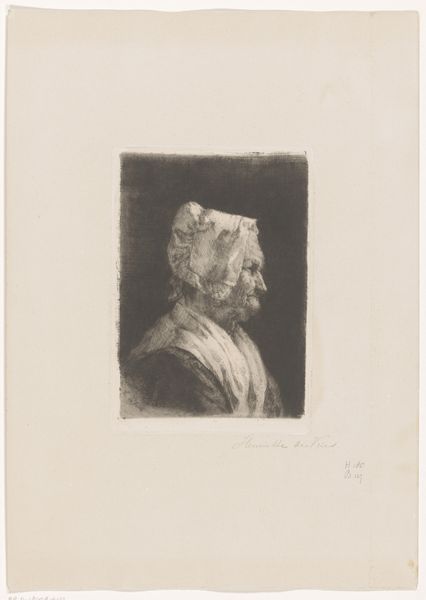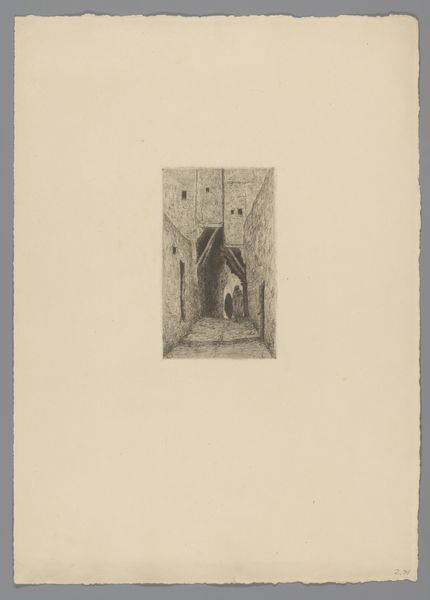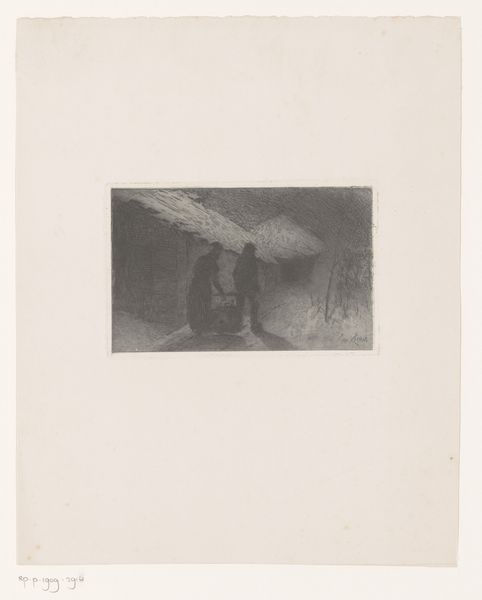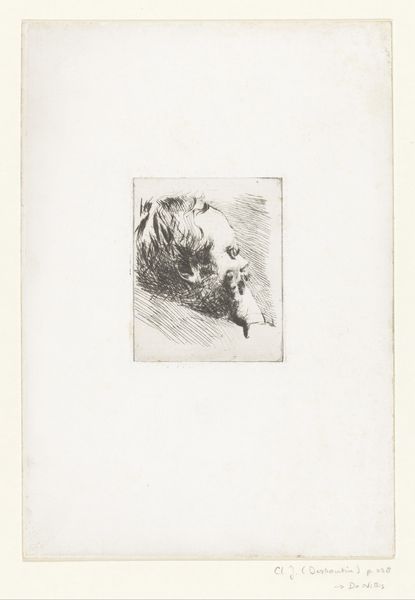
Dimensions: height 181 mm, width 138 mm
Copyright: Rijks Museum: Open Domain
Curator: This is Fr. van Groeningen’s "Biddende vrouw bij een crucifix," placing us somewhere between 1850 and 1910. It’s an etching on paper. Editor: A rather somber composition. The limited tonal range emphasizes a mood of penitence. It feels intimate, yet stark. Curator: Precisely. The figure, a woman in prayer before a crucifix, is rendered with an interesting contrast in texture. The etching captures the minute details of her attire, juxtaposed against the stark lines defining the crucifix. Editor: Yes, and it's important to acknowledge the reproductive nature of printmaking, etching, in particular, allowed for a wider dissemination of images, bringing what was once limited by access into a more widely available form. I can’t help but think of who made the paper and with what the matrix was inked! Curator: An astute point, acknowledging the intersection of labor and production. Observe how van Groeningen manipulates light and shadow. The figure is not simply lit, she emerges from darkness, focusing our attention not only on her but also on her profound devotion. Editor: I agree, and this piece begs for a dialogue around Romanticism's tendency towards genre painting – here we have a devout woman, likely of the working class given the suggestion of regional headwear, situated in her devotional act. Where does such image making circulate, what kinds of stories does this perpetuate? Curator: These aesthetic decisions heighten the symbolic weight, lending a spiritual aura to the quotidian. Editor: These dark, somber colors were chosen as the most economic choice for reproducible image making. It’s compelling to consider its mass production. Curator: Ultimately, it provokes consideration of faith and societal conventions represented through skilled composition. Editor: And reveals, too, the power of repeatable imagery to disseminate stories in new and impactful ways.
Comments
No comments
Be the first to comment and join the conversation on the ultimate creative platform.
